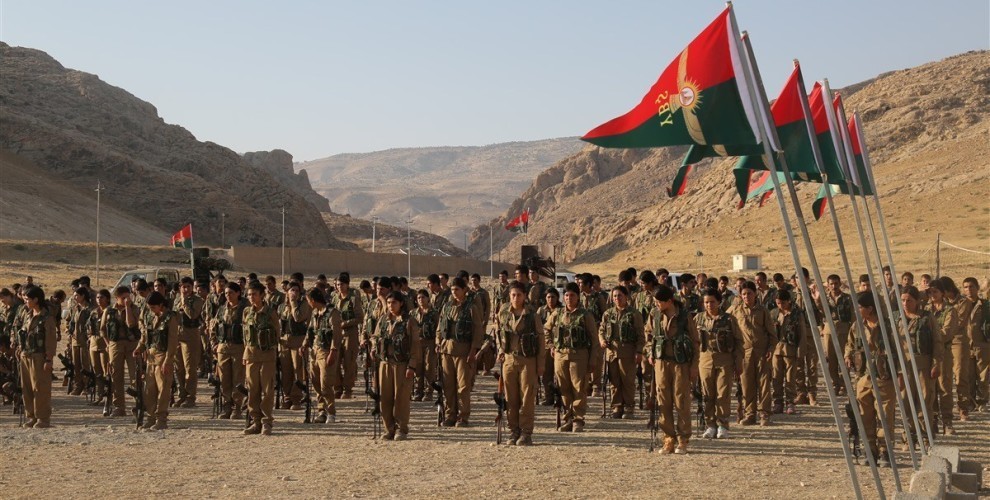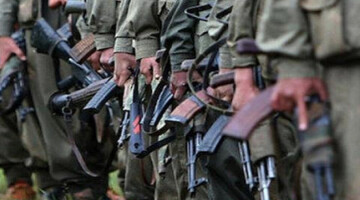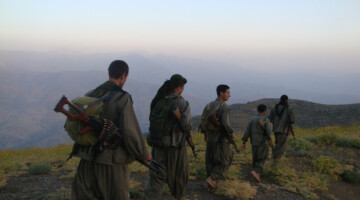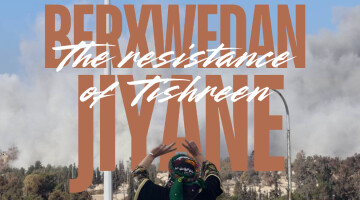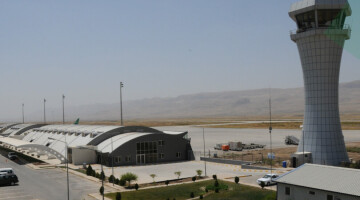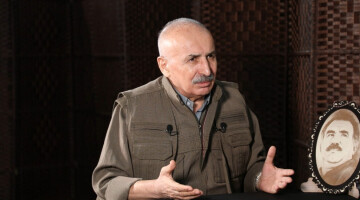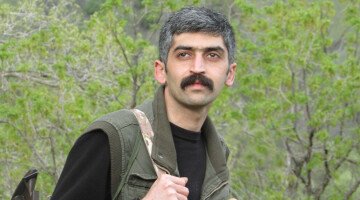Four years have passed since the ISIS attack on Shengal on 3 August 2014. The Yazidis call this attack the 74th Ferman, i.e. decree of genocide, in which they suffered one of the biggest massacres in human history. They were subjected to a genocide since the PDK’s Peshmerga forces that were responsible for the security of the region fled while ISIS approached Shengal.
The ISIS killed thousands of Yazidis in Shengal. According to official sources, 6,000 women and children were taken captive as war booty, suffered gang rape and were sold on slave markets. More than 3,000 women and children are still in the hands of ISIS. Hundreds of thousands managed to save themselves from the massacre because they were able to withdraw to the Shengal mountain thanks to the resistance of a twelve-member group of PKK guerrillas.
When did the ISIS attack on Shengal begin?
Prior to the attack on Shengal, ISIS had occupied one of the largest cities in Iraq, Mosul, on June 9, 2014. They then moved to Tal Afar, about 60 kilometers west of Mosul. Part of the Shiite and Alevi population fled to Shengal amid continued attacks. After the occupation of Tal Afar, the ISIS got stationed around the Yazidi villages in the region.
The Yazidis trusted the promise of protection of the Peshmerga and so the majority of the population remained in their villages. People who wanted to leave the region were even sent back by the Peshmerga. Prior to the ISIS attack, PDK President Masoud Barzanî said: "We are determined to protect every inch of Shengal." Nevertheless, 12,000 Peshmerga were withdrawn by order, leaving the Yazidi population to face a massacre.
While the Peshmerga fled, the population resisted
On August 3, 2014, ISIS attacked Shengal, the sacred land of the Yazidis. The attacks on the villages of Sibe Şêx Xidir and Girzerik south of the Shengal Mountains continued until the early hours of the morning. The villagers resisted all night with their own means and then fled to the Shengal Mountains when the Peshmerga did not come to the expected aid.
While the villagers in the south were taking shelter in the mountain, the inhabitants of the villages in the north crossed the border into Rojava and thus saved themselves. The sick, the elderly, the disabled and the children who could not escape were all murdered by ISIS. They were subjected to a cruel massacre. In the villages, all men and boys older than ten years were murdered. The Yazidi women captured by the ISIS were sold as slaves. Hundreds of women jumped from the high cliffs to avoid falling into the hands of ISIS.
Resistance on Shengal mountain
On 28 June 2014, the PKK sent a twelve-member advance force to defend Shengal on the call of the Kurdish People’s Leader Abdullah Öcalan. Twenty days before the massacre, the Peshmerga forces and Barzani government had captured three members of the 12-person guerrilla group and a patriotic Yazidi resident. The remaining guerrillas moved to the Shengal mountain and started organizing the youth. When the ISIS attack began on August 3, a nine-man guerrilla group defended the population fleeing to the Shengal Mountain.
The guerrillas held the road from Sinûnê to Dugirê to the west of Shengal Mountain and did not allow the ISIS to capture the mountain. The Yazidi youths drew strength from the resistance of the guerrillas against the ISIS and joined the defense of the mountain. After the nine-member guerrilla group resisted ISIS attacks for several days without food and drink, YPG/YPJ forces from Rojava and two battalions of People's Defense Forces (HPG) guerrillas came to the aid of Shengal on 6 August.
The "Humanitarian Corridor" from Rojava to Shengal
The YPG/YPJ and HPG forces set up a safe corridor to evacuate into Rojava the hundreds of thousands of Yazidis who had fled to Shengal Mountain. Over this corridor more than 200,000 Yazidis could cross the border into Rojava. So an even bigger massacre could be prevented. The YPG/YPJ and HPG fought at the cost of their lives to sustain this "humanitarian corridor". 100 fighters fell in defense of the evacuation of the population. In total, nearly 300 YPG/YPJ and HPG fighters were killed by the ISIS in the Shengal massacre.
After the ISIS, Yazidis were exposed to the brutality of Turkey
The rescued Yazidis remained in Rojava or moved to southern and northern Kurdistan. Tens of thousands were settled in in refugee camps or were lodged with relatives in Şırnak, Amed (Diyarbakir), Siirt, Mardin and Urfa in northern Kurdistan.
About 4,000 Yazidis were housed at the Fidanlik camp in Yenişehir, which was set up by the DBP Municipality in Amed. With the help of DBP municipalities, civil society organizations and volunteers, schools and health centers as well as women's centers were set up in the camps.
After the Amed Metropolitan Municipality was usurped by the AKP government on November 1, 2016, the Fidanlık Camp was evacuated.
Almost 1,500 Yazidis were forcibly sent to the state-run AFAD camp in Midyat district of Mardin. The state refused to allow civil society organizations, MPs and journalists access to the AFAD camp, and some of the Yazidis were evicted from the camp a short time later. After these experiences, a large part of the Yazidis returned to South Kurdistan, Rojava and Shengal. Some of them went to Europe as refugees.
Resistance Units and Asayish of Êzidxan founded
Only a month after the massacre, the Shengal Resistance Units (YBŞ) were founded. Thousands of Yazidi youths joined the YBŞ with the motto "We are the answer to the massacre". In 2015, Shengal Women's Units (YJŞ) were founded. Since YBŞ and YJŞ have always been at the forefront of battle, the Asayish of Êzidxan (Yazidi Land) was founded for internal security in June 2016. Hundreds of members of these security forces defend the center and villages of Shengal.
On 19 December 2014, the offensive to free Shengal began under the leadership of YBŞ and with the support of HPG and the women's guerrilla force YJA-Star. The offensive lasted about a year and ended on November 13, 2015 with the complete liberation of Shengal.
From twelve people to a large army
Now, four years after the massacre, Shengal has an organized self-defense army, women's institutions and educational institutions, autonomous councils and regional administrations.
On March 23, 2018, the co-presidency of the Executive Council of Kurdistan Communities Union (KCK) stated that the Yazidis were now an organized society and provided security for Shengal and the surrounding area, so the guerrillas would withdraw from Shengal.
The HPG and YJA-Star guerillas had done their job properly, leaving behind a large Yazidi army as they retreated to the mountains on April 4. Of the twelve guerrilla fighters under whose protection hundreds of thousands of Yazidis were saved, some died in Shengal and some others later in northern Kurdistan.

